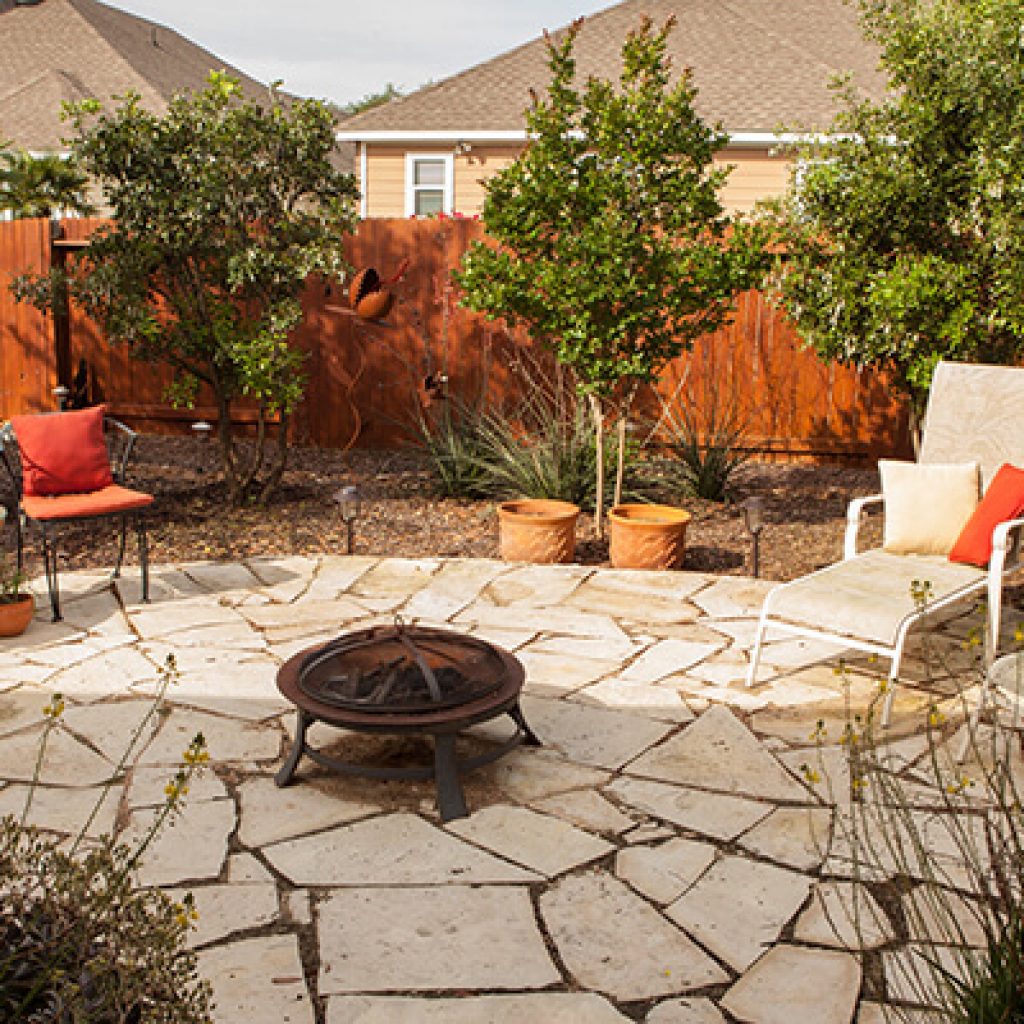Basic Design Principles
Here are some basic garden design principles and things to consider as you begin to design your landscape.
Quick Design Tips


Quick Visual Appeal
The “rule of threes” is a simple design concept: in landscape beds, lay out plants in odd-numbered groupings of 3, 5, 7, etc. This is a strategy that allows relaxing visual patterns without getting too cluttered or disorganized.

Eye-Catching Gardens
For a wow moment, include a focal point: a birdbath, statue, specimen plant, or your favorite yard art piece.

Liven up Your Yard
Think of your yard as an additional living area and plan accordingly, using some of the same concepts you would use inside your home.

Year Round Appeal
If you only include deciduous plants in your garden, it will look empty and brown when they drop their leaves in the winter. Backbone plants are generally evergreen or have a strong architectural shape all year.

Plan for Patios & Walkways
A general rule is to make them bigger or wider than you first planned. Consider pervious options that allow rain to penetrate the ground rather than creating run-off.
Walkways should be a minimum of 4 feet wide. The more you use it, the wider it should be.
A small patio of 6 to 8 feet by 10 to 12 feet will comfortably seat four people. As a general rule, plan for nine square feet per person.

Your Color Style
Much like your indoor decor, the colors you pick will be governed by your personal style. Monochromatic schemes usually evoke serenity while complimentary colors can be energizing. If your main goal is attracting pollinators, hummingbirds or other plant-seeking wildlife, you may want to consider their favorite colors.
For Your Consideration

- Make the front entrance of your home special. It is the first impression! Use evergreen plants in this area so the entrance looks good year round.
- Consider the style of your home when you consider your landscape design. Keep it consistent.
- Reduce turf to the amount you and your family and pets are going to actually use.
- Create outdoor rooms that make your garden feel more intimate by creating a feeling of enclosure.
- Hide service areas. You can have an adorable, painted shed with space behind it to store your trash cans, wheel barrels, hoses, etc. Attach hooks and have everything neatly stored out of sight.
- Consider the overall color scheme before visiting the nursery for a more cohesive look to your garden. A color wheel is a simple tool that can help you find an appealing color palette.
- Texture and foliage are key; spiky, fluffy, smooth or rough. These qualities can add drama and interest to your garden.
- Groupings and mass plantings are very pleasing to the eye, creating a serene look by giving your eyes a place to rest.
- With careful planning, you can create a garden with year-round interest. Balance evergreen and deciduous plants, color and texture to achieve this.
- Keep transitions from one area to another in mind and eliminate or minimize abrupt changes. Curves mimic nature and create a more naturalistic garden look. Straight lines fit in with mid-century homes and are easier to edge.
Related Video

Related Article





